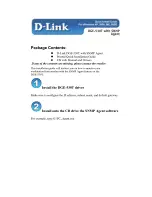
Brocade Adapters Troubleshooting Guide
79
53-1001582-01
Diagnostics
3
Performing a queue test through BCU
Use the diag --queuetest command to perform a queue test.
bcu diag --queuetest <port_id> [-q <queue_number>
where:
port_id
Adapter port number. This could be the PWWN, port hardware path, or
user-specified port name. This could also be the adapter-index/port-index.
For example, to specify adapter 1, port 1, you would use 1/1 as the port
identification.
-q queue_number
Specifies the CPE queue number from 0 to 3. If the queue number is not
specified, all queues are tested.
Performing a queue test through HCM
Use the Hardware Tests tab on the Diagnostics dialog box as follows to perform a queue test.
1. Launch HCM.
2. Select Configure > Diagnostics
3. Click the Hardware Tests tab.
4. Select Queue Test.
5. Click Start.
Trace route
Use the BCU and HCM to trace the SAN path between the adapter and remote end point.
Tracing the route through BCU
Use the fcdiag --traceroute BCU command to trace the route between end points.
fcdiag -–fctraceroute <port_id> <rpwwn> [-l lpwwn]
where:
port_id
ID of the port from which you want to trace the route. This could be the
PWWN, port hardware path, or user-specified port name. This could also be
the adapter-index/port-index. For example, to specify adapter 1, port 1 use
1/1 as the port identification.
rpwwn
Remote PWWN to which you want to trace the route.
lpwwn
Logical PWWN. 0 indicates the base port.
Tracing the route through HCM
Use the FC Trace Route test to trace the route between the adapter port and a Fibre Channel target
port. To run this test, use the following steps:
1. Launch the HCM.
2. Select Configure > Diagnostics to display the Diagnostics dialog box.
















































